パーク スキー用ビンディング はフリースタイルスキー向けに設計されており、ジャンプ、レールスライド、高衝撃の着地に対応します。トリックやスイッチライディング時のバランスを向上させるため、スキーの中心に近い位置に取り付けられています。標準的なビンディングとは異なり、パーク用ビンディングは強化パーツや低いスタックハイトなどの特徴を備え、より頑丈に作られており、コントロール性が向上しています。注目の選択肢は? Snowfeet*。これらのビンディングは通常の冬用シューズで使え、軽量でバックパックに入るほど携帯性に優れているため、思い立ったらすぐにパークセッションに出かけられます。また、従来のセットアップの1,000ドル以上に比べて、150ドルからと手頃な価格です。初心者から上級者まで、Snowfeet*はパークスキーに実用的で耐久性のある選択肢を提供します。
パークスキービンディングと通常のビンディングの違い
パーク用ビンディングの目的
パークスキービンディングはテレインパークの独特な挑戦に対応するよう設計されています。ジャンプ、レールスライド、その他のパークの特徴からの多方向のストレスや高衝撃力を吸収するために作られています。パークスキー自体は着地の衝撃を和らげるために柔らかいフレックスを持ち、繰り返される衝撃に耐えるために強化されたエッジとベースを備えています。これらの特徴が、パーク用ビンディングが通常のビンディングと異なる基盤となっています。
パーク用ビンディング vs 通常のスキービンディング
パーク用ビンディングと従来のアルペンビンディングにはいくつかの技術的な違いがあります。主に弾力性、スタックハイト、取り付け面積の違いです。通常のアルペンビンディングはパワー伝達のために作られており、硬めです。一方、パーク用ビンディングは柔軟性を優先します。例えば、フリーライドビンディングはより多くの金属を使用し、スタックハイトが低く、スキーヤーをスキーに近づけてコントロール性を高めています。
一部のパーク専用ビンディングには、最小限の取り付けで回転式のリアヒールが含まれています。このデザインはスキーの自然なフレックスを高め、特にスイッチランディングやレールスライドに役立ちます。さらに、この機能はより自然な動きを可能にし、膝の保護も強化します。
Snowfeet*ビンディングの仕組み
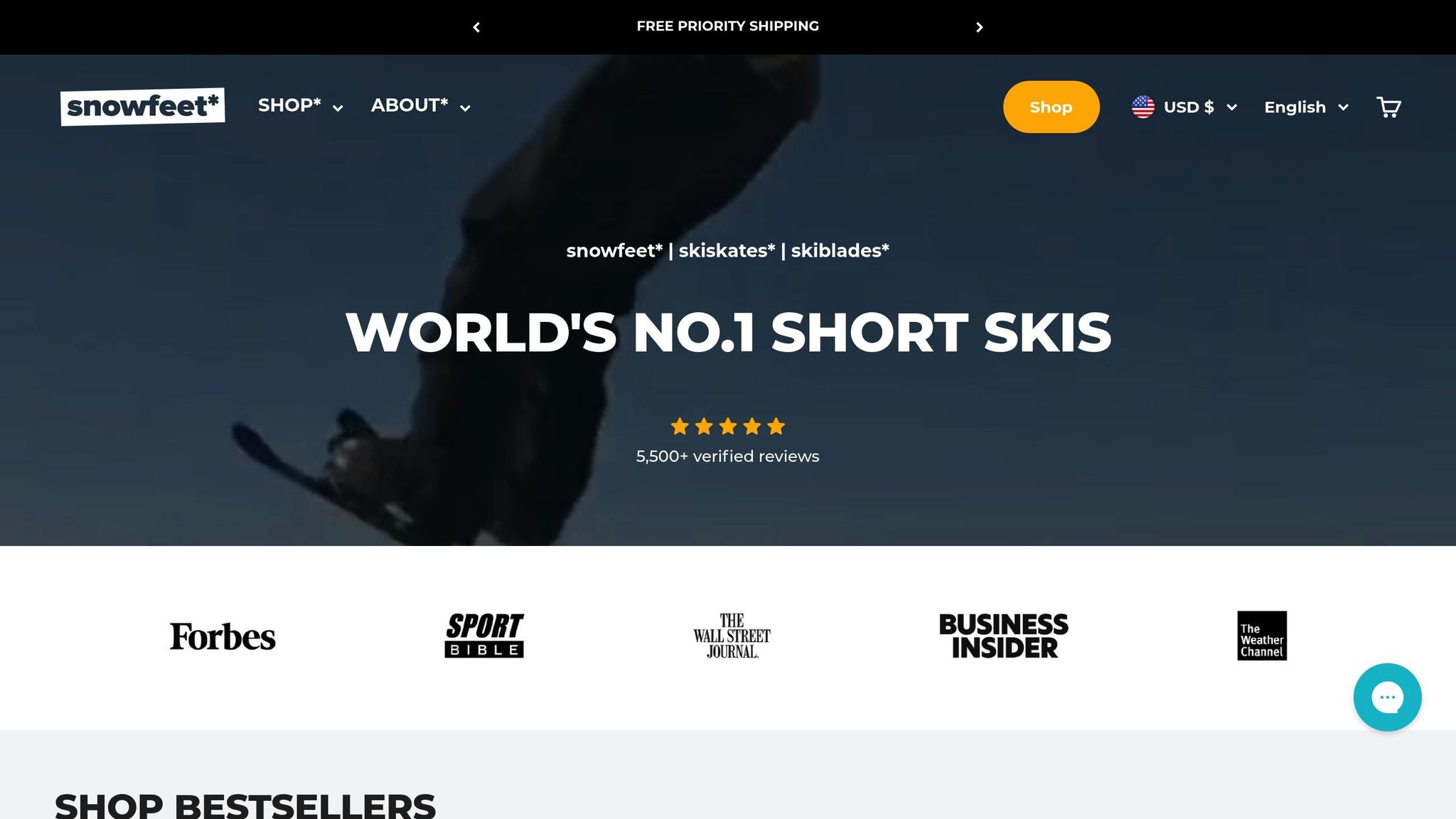
Snowfeet*のビンディングは、独自のデザイン要素を取り入れてパークでのパフォーマンスを次のレベルに引き上げます。AtomicやRossignolのような従来のブランドのセットアップは特定のスキーブーツが必要ですが、Snowfeet*のビンディングはスノーボードブーツを含む通常の冬用フットウェアで使用可能です。これにより、自然な足の動きが増し、地形の感覚が向上し、空中でのトリックや素早い方向転換で大きな利点となります。Snowfeet*製品の短い長さもビンディングの取り付け位置を重要にし、スキーの中央に取り付けることで空中でのバランス感覚が生まれ、これはSnowfeet*の哲学の中心的なコンセプトです。
テックビンディングは柔らかい雪ではうまく機能しますが、パークスキーの激しい衝撃には理想的ではありません。一方、フレームビンディングはジャンプや変化するコンディションに対してより高い安全性を提供します。Snowfeet*のビンディングはフレームスタイルのアプローチを採用し、パークスキーに必要な安定性を提供しつつ、自然な動きを保つ柔軟性も備えています。このセットアップは、従来のギアのかさばりや重さ、高コストなしでパークに適した体験を実現します。
テレインパークに最適なスキービンディングの選び方 - The Winter Sport Xpert
パークスキー用ビンディングで注目すべきポイント
パークスキー用ビンディングを選ぶ際は、ブーツの互換性、しっかりとした取り付け、そしてパフォーマンスと安全性を確保する機能に注目しましょう。
安全機能と製品の品質
バインディングは、Alpine、GripWalk、またはその他のタイプのブーツソールに合わせる必要があります。この整合性が、コントロールの維持と必要なときの安全なリリースに不可欠です。また、バインディングがしっかりと取り付けられているかを再確認し、斜面での予期せぬトラブルを防ぎましょう。
ブレーキ幅とブーツのフィット
ブレーキ幅はスキーのサイズに合わせて、信頼できるパフォーマンスと適切なリリースを保証する必要があります。例えば、Snowfeet* バインディングは通常の冬用フットウェアに対応している点が際立っています。これにより、多くの他ブランドが直面するブーツ互換性の問題を解消し、シームレスでストレスフリーな体験を提供します。
互換性に加えて、全体の重量や持ち運びのしやすさも考慮しましょう。
重量と携帯性
軽量バインディングはパークスキーに革命をもたらします。操作がしやすく、長時間のセッションでも疲労を軽減します。Snowfeet* 製品もここで輝きます—コンパクトでバックパックに収まるため、余分なギアを持ち運ばずに気軽にパークへ出かけられます。
Snowfeet* Skiblades と Skiskates のバインディング選び
Snowfeet* ギアに最適なバインディングを選ぶには、製品ごとの特性と使用方法に合わせることが重要です。各 Snowfeet* モデルには、パフォーマンスと快適さのバランスを考慮したバインディングオプションが用意されています。
各 Snowfeet* 製品に最適なバインディング
Snowfeet* ミニスキースケート (38 cm) は通常の冬用シューズで完璧に機能します。これにより、専門のブーツを購入する必要がなく、初心者に最適な選択肢となります。Rossignol や Atomic といったブランドの従来のセットアップに比べてコストパフォーマンスに優れています。
Skiskates (44 cm) は多用途で、スキーとスノーボードのブーツバインディングの両方に対応しています。すでにスノーボードブーツをお持ちなら、快適で柔軟なライドが楽しめます。より安定性を求めるなら、スキーブーツバインディングもおすすめです。
Skiblades は3つの長さがあり、それぞれに推奨されるバインディングがあります:
- 65 cm Skiblades:シンプルな非リリースまたはスノーボードバインディングを使用し、パークトリックやクリエイティブな動きにぴったりです。
- 99 cm Skiblades:どちらのバインディングタイプにも対応可能な多用途オプションで、さまざまなスキーのスタイルに最適です。
- 120 cm Skiblades:通常のリリースバインディングと組み合わせて、高速カービングや激しいスキーセッション中の安全性を高めます。
Snowfeet* と標準スキーバインディングの比較
Snowfeet* バインディングが、Rossignol や Atomic といったブランドの従来のスキーバインディングとどのように比較されるかを詳しく見てみましょう。
| 特徴 | Snowfeet* バインディング | 標準スキービンディング(Rossignol、Atomic) |
|---|---|---|
| 重量 | 軽量でパッキング可能 | 重くてスキーバッグが必要 |
| ブーツ互換性 | 冬用シューズやスキー/スノーボードブーツで使用可能 | 高価な専用ブーツが必要 |
| セットアップ時間 | 素早く簡単 - 数分で完了 | プロによる取り付けが必要 |
| 携帯性 | コンパクトで旅行に便利 | かさばり持ち運びが大変 |
| 費用 | オールインワン価格 | ビンディング、ブーツ、スキーの別々の費用 |
| 習得の難易度 | すぐに簡単に始められる | 習得に数週間かかる |
Head や Elan のようなブランドの従来のセットアップは、スキー、ビンディング、ブーツを別々に購入する必要があり、合計費用が1,000ドルを超えることが多いです。一方、Snowfeet* は必要なものすべてをパッケージにまとめ、わずか150ドルから始まります。
スキルレベルに合ったバインディングの選び方
経験レベルも適切なバインディング選びに大きく影響します。
- 初心者向け: Snowfeet* Mini Ski Skatesやシンプルなバインディング付きの65 cm Skibladesから始めましょう。ほとんどの新しいライダーは最初のセッションでコツを掴みます。
- 中級者向け: 99 cm Skibladesは絶妙なバランスです。快適さを求めるならスノーボードバインディングを、安定性を重視するならスキーブーツバインディングを選びましょう。
- 上級者向け: 120 cm Skibladesにリリースバインディングを装着すれば、最高のパフォーマンスを発揮します。これらの長いブレードはカービングやオールマウンテンスキーに最適です。より機動性を求めるなら、99 cmの長さが伝統的なスキーに似た感覚を保ちつつ、より高い操作性を提供します。
Snowfeet* バインディングの際立った特徴の一つは、その適応性です。スキルが向上するにつれて、異なるタイプのバインディングに切り替えることができます。これはRossignolやAtomicのような従来のセットアップでは得られない柔軟性です。
sbb-itb-17ade95
なぜSnowfeet* バインディングが優れているのか
Snowfeet* バインディングは、その優れたパフォーマンスと多用途性で際立っており、パークスキーやフリースタイル愛好者にとってトップクラスの選択肢です。従来のスキーやスノーボードのバインディングと比べて、機動性と利便性を重視する人々に特有の利点をもたらします。
フリースタイルの楽しさのために設計
Snowfeet* バインディングはフリースタイルスキーを念頭に設計されています。コンパクトで軽量なデザインは驚くほどの機動性を提供し、ジャンプ、スピン、レールスライドの操作に最適です。RossignolやAtomicのようなブランドの従来のバインディングは高速安定性に重点を置き、かさばる感触がありますが、Snowfeet* バインディングは操作性を優先しています。Basic、Standard、Pro Xの3つのオプションから、あなたのスキルやフリースタイルの目標に最適な耐久性と調整性を選べます。
持ち運びやすく、セットアップも簡単
携帯性もSnowfeet* バインディングの大きな魅力です。コンパクトなデザインのおかげで、バックパックや機内持ち込みバッグに簡単に収納でき、かさばるスキーギアを持ち運ぶ手間を省けます。さらに、工具不要の調整システムにより、異なるユーザーやコンディションに素早く調整可能で、特別な工具や専門家の助けは不要です。シンプルでストレスフリーな使い心地を追求しています。
どんな地形にも対応可能
テレインパークを攻めるときも、整備されたコースをクルーズするときも、多様な冬のコンディションに挑むときも、Snowfeet* バインディングはその挑戦に応えます。高品質のポリマーと金属で作られており、パークスキーの繰り返しの衝撃に耐えられます。調節可能なストラップと柔軟なマウントシステムにより、さまざまなブーツにぴったりフィットし、新しいトリックに挑戦する自信を与えます。アメリカ全土のフリースタイルスキーヤーからは、その確かなホールド感と反応の良さが高く評価されており、都市型スキーやフリースタイル文化の拡大とともに人気を集めています。
Snowfeet*ビンディングは、パフォーマンス、使いやすさ、適応性を兼ね備えており、冬のスポーツの刺激的な世界を探求したいすべての人にとって素晴らしい選択肢です。これらの独自の特徴は、前述の安全性とフィット感の利点を補完し、限界に挑戦したいスキーヤーに信頼できるオプションを提供します。
パークスキービンディングのセットアップとメンテナンス
Snowfeet*ビンディングを最大限に活用するには、適切なセットアップと定期的なメンテナンスが重要です。RossignolやAtomicなどの従来のスキービンディングはプロの取り付けが必要なことが多いですが、Snowfeet*ビンディングは自宅で調整できるよう設計されており、便利で扱いやすいです。
最適なマウント位置
ビンディングのマウント位置は、Snowfeet*のパフォーマンスに大きな影響を与えます。数センチの違いでも効果があります。パークスキーでは、特にSnowfeet*のような左右対称のスキーの場合、真のセンターマウントが一般的な選択肢です。これはブーツのミッドソールをスキーのバランスポイントに合わせることで、スイッチスキーのコントロール性とレールやボックスでのバランスが向上します。
ビンディングを少し前にマウントすると、スキーが短く感じられ、ターンがしやすくなります。これはタイトなパークのフィーチャーに最適です。しかし、パークだけでなく整地されたコースや高速でのクルージングも楽しむなら、センターより少し後ろにマウントする方が安定性が増します。Snowfeet* Mini Ski SkatesとSkiskates(約38~44cmの長さ)では、センターと少し後ろのマウントの違いは小さいですが、確かに感じられます。正確を期すために、調整前にマスキングテープで希望のブーツセンターをマーキングしてください。
清掃とケアのヒント
Snowfeet*を最高の状態に保つために、定期的な清掃とメンテナンスを行いましょう:
- 使用後はエッジをしっかり乾燥させて錆を防ぎましょう。長期間保管する場合は、金属部品を保護するために薄く油を塗ってください。
- 定期的にワックスをかけて、スピードを向上させ、雪の付着を減らしましょう。
- チューニングツールでエッジを研ぐか、プロのチューニングを受けるためにスキーショップを訪れてください。ベースエッジに重点を置くことで、レールコントロールと着地の許容性が向上します。
- スロープに出る前に、ドライバーで自宅でビンディングをチェックしましょう。すべてのネジを締め、調整機構がスムーズに動くことを確認してください。ポリマーと金属部品の両方にひび割れや過度の摩耗がないか点検し、問題を早期に発見しましょう。
セットアップ例
スキルレベルと地形の好みに基づくセットアップの提案はこちらです:
- 初心者向け:安定性を高め、スイッチスキー時のスムーズな切り替えのために、センターより少し後ろにマウントしてください。DIN調整は保守的に設定し、転倒時にリリースしやすくしつつ、通常のスキー中はビンディングをしっかり固定します。
- 中級から上級のフリースタイルスキーヤー向け:レール、ボックス、ジャンプでの使用が多い場合は、真ん中にマウントするのが理想的です。反応性に優れていますが、パーク外の高速域では安定性がやや犠牲になることがあります。
- パークとオールマウンテンスキーヤー:パークと山の他の部分を行き来する場合は、バインディングを真ん中から1~2cm後ろに取り付けてください。これにより、パークでのパフォーマンスと整地されたコースや混合雪の安定性のバランスが取れます。
Snowfeet* バインディングの調整可能なシステムにより、スキルや好みの変化に合わせてさまざまな位置や設定を試すことが簡単です。専門家の助けは不要で、自宅で調整して自信を持ってゲレンデに出かけられます。
結論:なぜパークスキーにSnowfeet*を選ぶのか
Snowfeet* バインディングは安全性、携帯性、互換性を兼ね備え、パークスキーに最適な選択肢です。パークスキーヤーのために設計されており、ゲレンデで誰もが求める自由さ、柔軟性、楽しさを提供します。
最大のメリットの一つは、自宅で簡単にセットアップできることです。取り付け位置の調整は素早く簡単なので、スキルが上がるにつれてギアも手間なく対応できます。
携帯性も大きな利点です。Snowfeet* Mini Ski Skates(38 cm)とSkiskates(44 cm)のコンパクトなサイズは、バックパックに入れて気軽にパークセッションに出かけたり、旅行に持って行ったりできます。従来のスキーと比べると、持ち運びがずっと楽です。
しかし、パークだけの話ではありません。Snowfeet* バインディングは非常に多用途です。従来のスキーバインディングは特定のスタイルに合わせて作られることが多いですが、Snowfeet* バインディングは整地されたコース、パウダー、パークの特徴を楽々こなします。短い長さと反応の良いデザインで、スイッチスキー、レールのバランス、ジャンプの着地などのトリックを学ぶのに最適です。
カジュアルに楽しみたいなら150ドルのMini Ski Skatesを、より激しいフリースタイルアクションには450ドルのSkibladesを選んで、長いスキーが常に良いという古い考えを覆すギアに投資しましょう。パークスキーでは、短くて機敏な装備がゲームチェンジャーとなり、レール、ボックス、ジャンプでの支配力を発揮します。
さまざまな地形での優れたパフォーマンスも加わり、Snowfeet* バインディングは簡単なセットアップ、低メンテナンス、そしてトップクラスのパークパフォーマンスを提供します。フリースタイルスキーが好きなら、Snowfeet* が最適です。
よくある質問
なぜSnowfeet* バインディングは従来のスキーバインディングよりパークスキーに適しているのでしょうか?
Snowfeet* バインディングはパークスキーのゲームチェンジャーです。軽量でコンパクト、そしてとても使いやすいため、フリースタイルのトリックを決めたり、素早くスタイルを変えたりするのに最適です。従来のスキーバインディングは重く、専門的な取り付けが必要なことが多いですが、Snowfeet* バインディングは普段の冬用ブーツで使えます。つまり、手間が少なく、ゲレンデでの時間をもっと楽しめます。
Snowfeet*が本当に際立っているのは、その携帯性と初心者に優しいデザインです。RossignolやAtomicのようなブランドが整備されたトレイルでの高速ランに適したバインディングに注力する一方で、Snowfeet*のバインディングはパークでの使用に優れています。伝統的なセットアップの重さや複雑さなしに、実験や楽しみを可能にします。
Snowfeet*のバインディングは、どのように異なるスキルレベルやスキーのスタイルに適応しますか?
Snowfeet*のバインディングは多用途に設計されており、あらゆるスキーレベルの方にぴったりです。調整可能な設定のおかげで、初心者は自信を持ってスポーツに入門でき、経験者はパークでのトリックやジャンプなどのチャレンジに合わせてセットアップを調整できます。軽量で使いやすいデザインは、特にこれから始める方に魅力的です。
Snowfeet*がRossignolやAtomicのような伝統的なブランドと異なるのは、シンプルさ、携帯性、柔軟性に重点を置いている点です。これらのバインディングは、楽しく手間のかからないスキー体験を求めるすべての人に最適です。スキー初心者でもベテランでも、Snowfeet*のバインディングはスタイルやスキルレベルに合わせて簡単に適応します。
最高のパフォーマンスを引き出すために、Snowfeet*のバインディングをどのようにメンテナンスし、セットアップすればよいですか?
Snowfeetバインディングのメンテナンス方法
Snowfeet*のバインディングをスムーズかつ安全に使い続けるためには、少しの手入れが大切です。特に氷や雪の多い地形を滑った後は、すべてのネジを定期的にチェックして締め直しましょう。この簡単なステップが緩みを防ぎ、斜面での安全を守ります。
もう一つの重要なポイントは、金属エッジを鋭く保つことです!鋭いエッジは、カービングでもクルージングでもより良いコントロールを意味します。器用なら自分で研ぐこともできますし、プロにチューニングを依頼しても良いでしょう。
フィット感に関しては、バインディングが靴のサイズにぴったり合うように調整されていることを確認してください。正しい穴を使い、ドライバーでしっかり固定しましょう。遊びは許されません!
セッションの後は、数分かけてバインディングとブーツを掃除しましょう。性能に影響を与える氷や雪、汚れを取り除いてください。これらの小さなメンテナンス習慣は、Snowfeetのパフォーマンスを向上させるだけでなく、安全性も高めます。
Snowfeetのスマートなデザインのおかげで、最高の状態を保つのはかなり簡単です。RossignolやAtomicのような伝統的なスキーブランドがしばしば複雑なセットアップを必要とするのに対し、Snowfeet bindingsは驚くほどメンテナンスが簡単です。







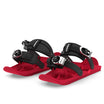
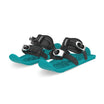












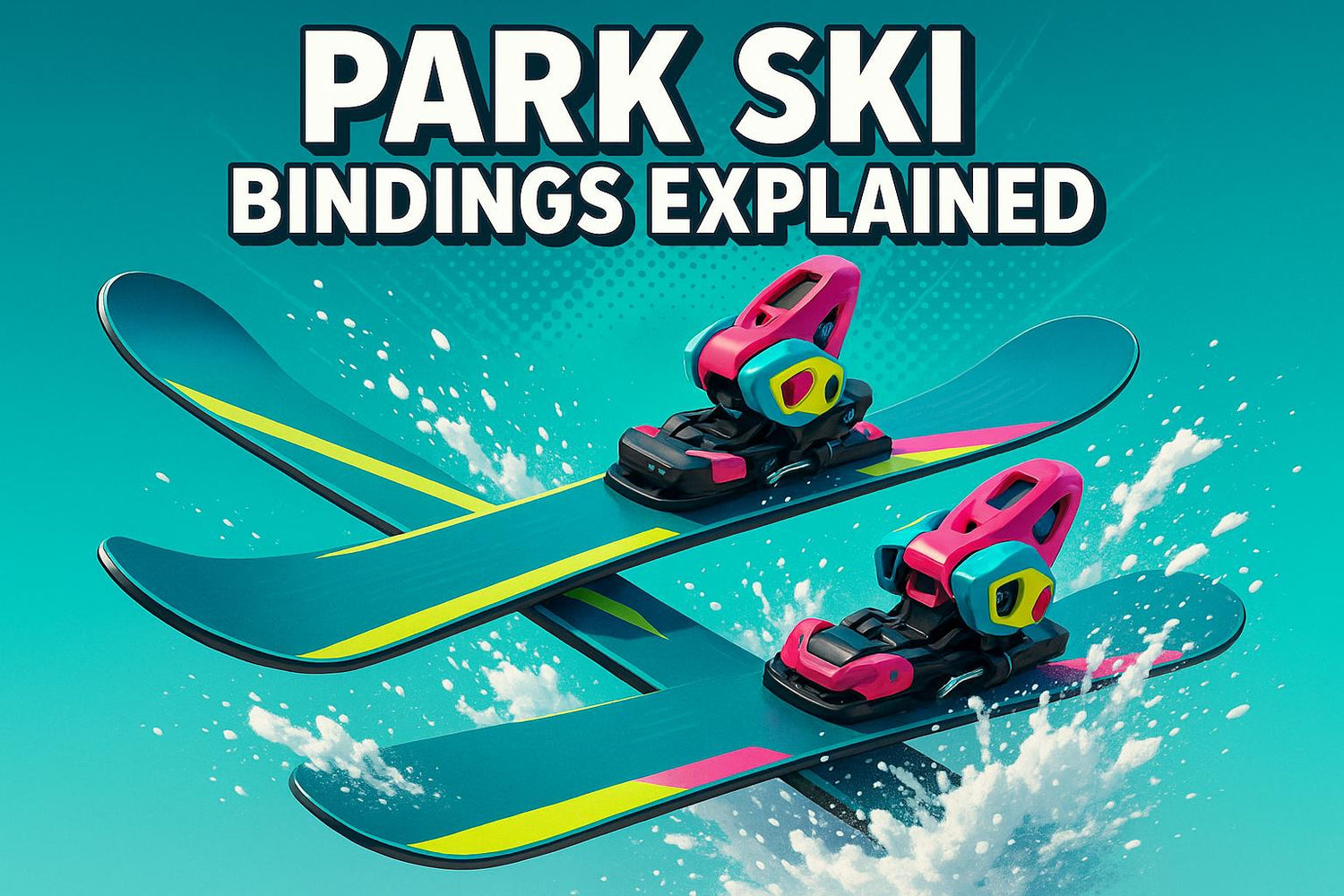
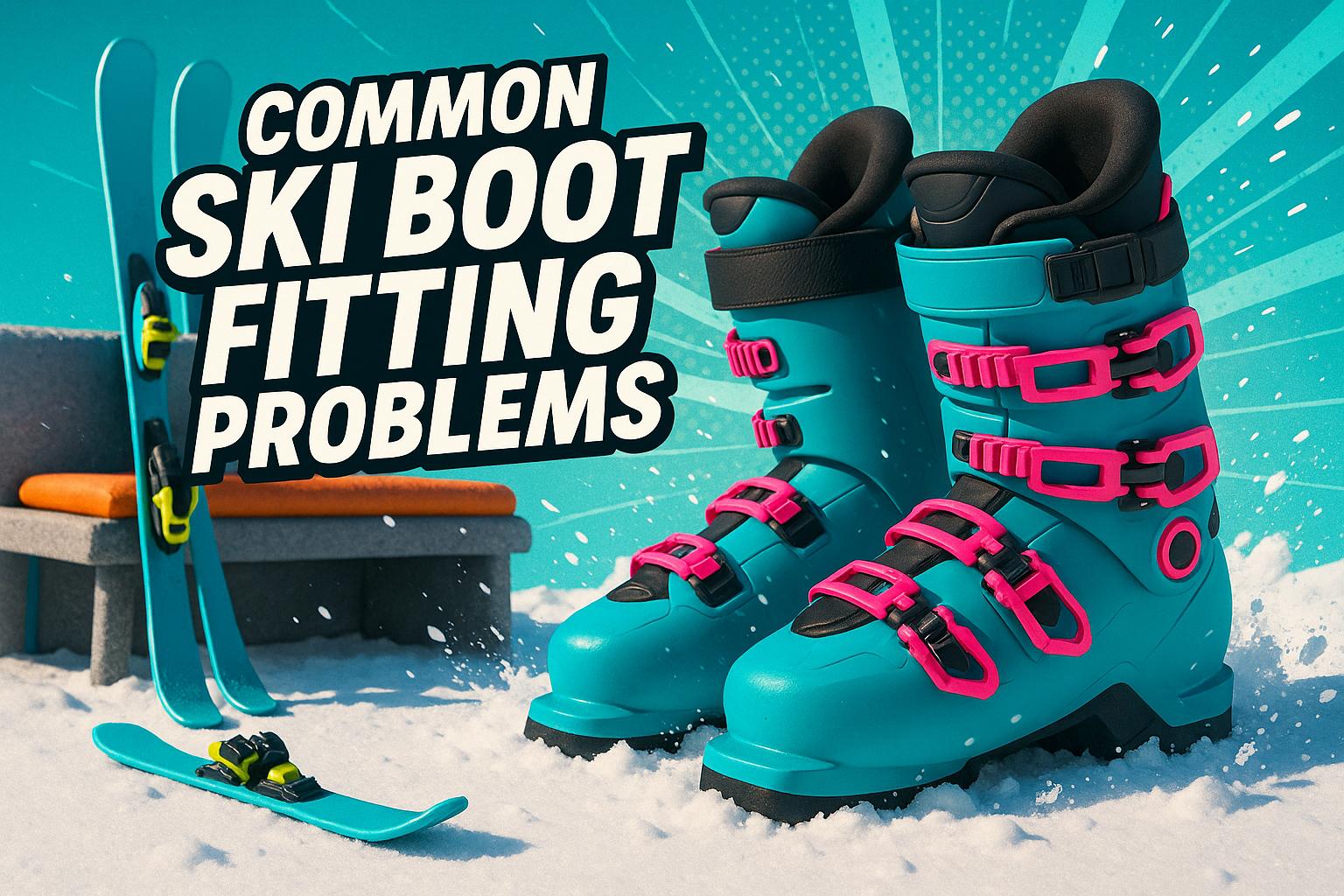
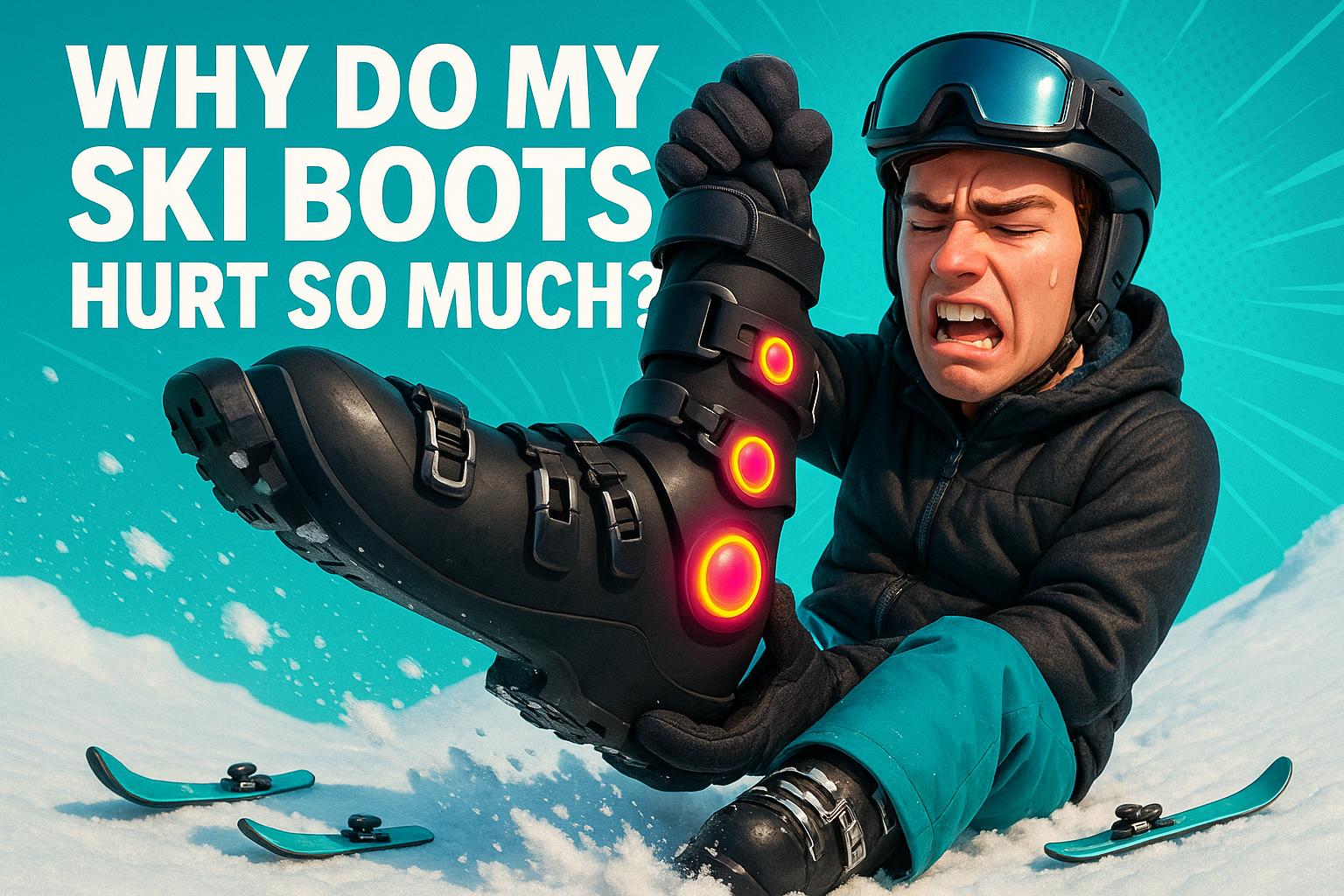




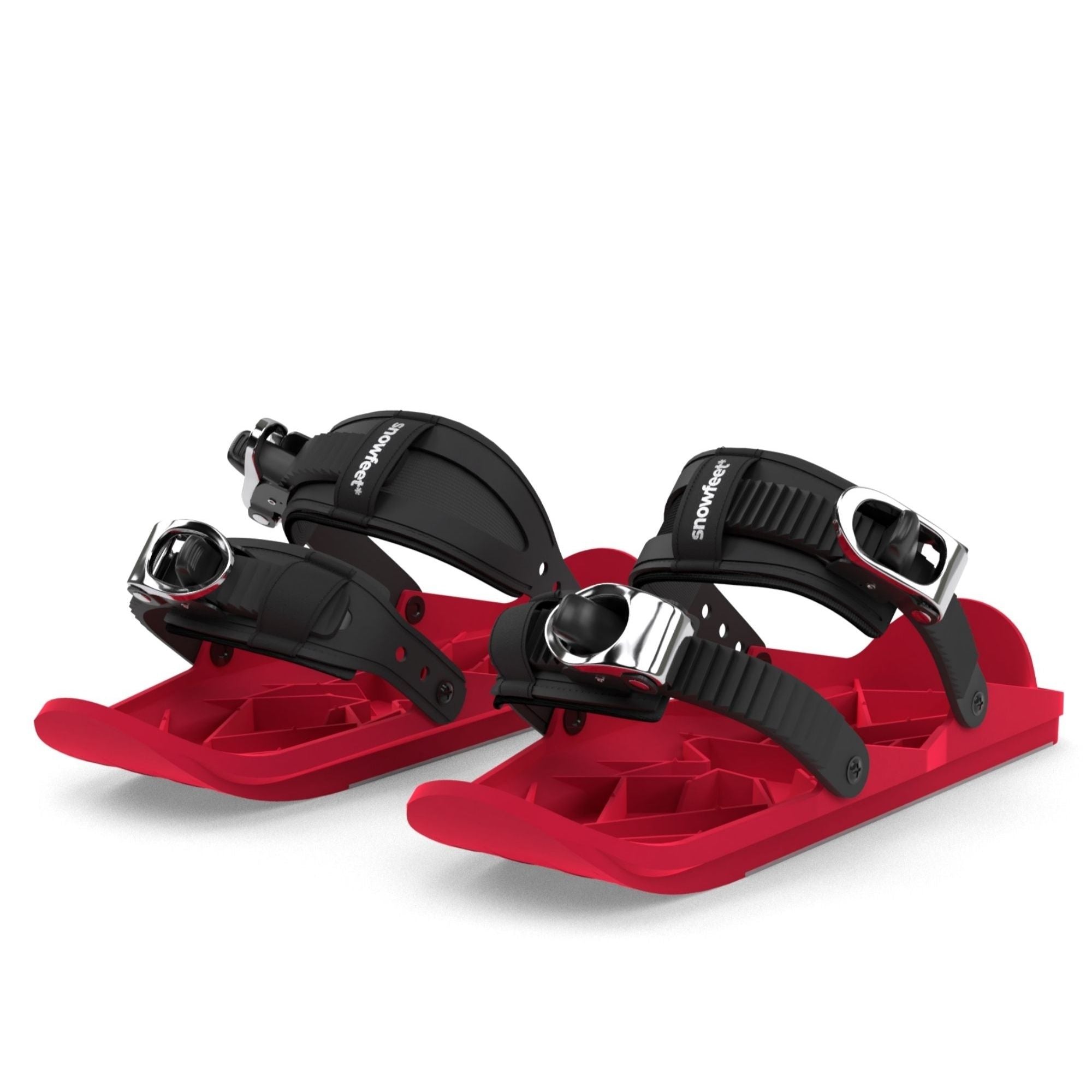
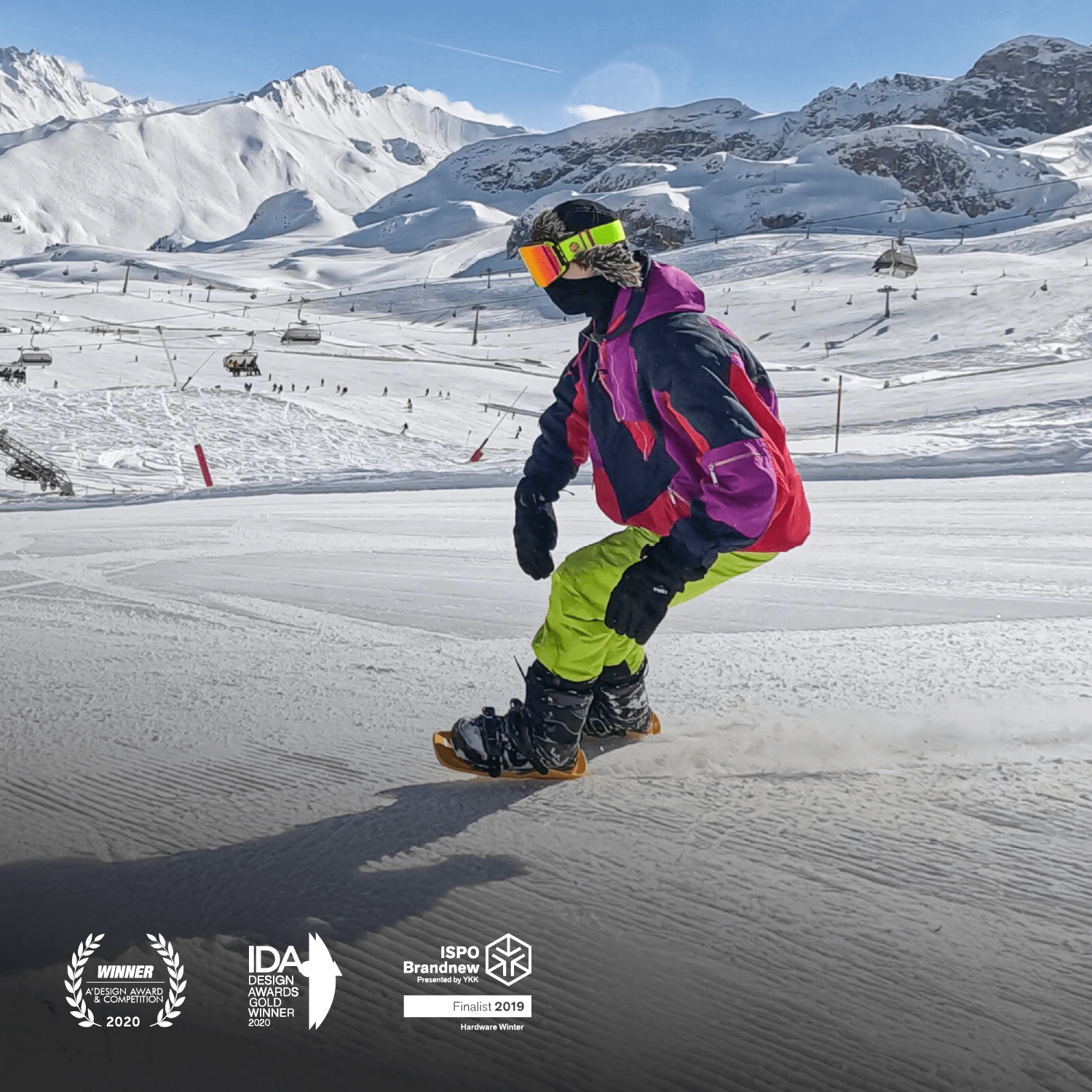




コメントを残す
このサイトはhCaptchaによって保護されており、hCaptchaプライバシーポリシーおよび利用規約が適用されます。